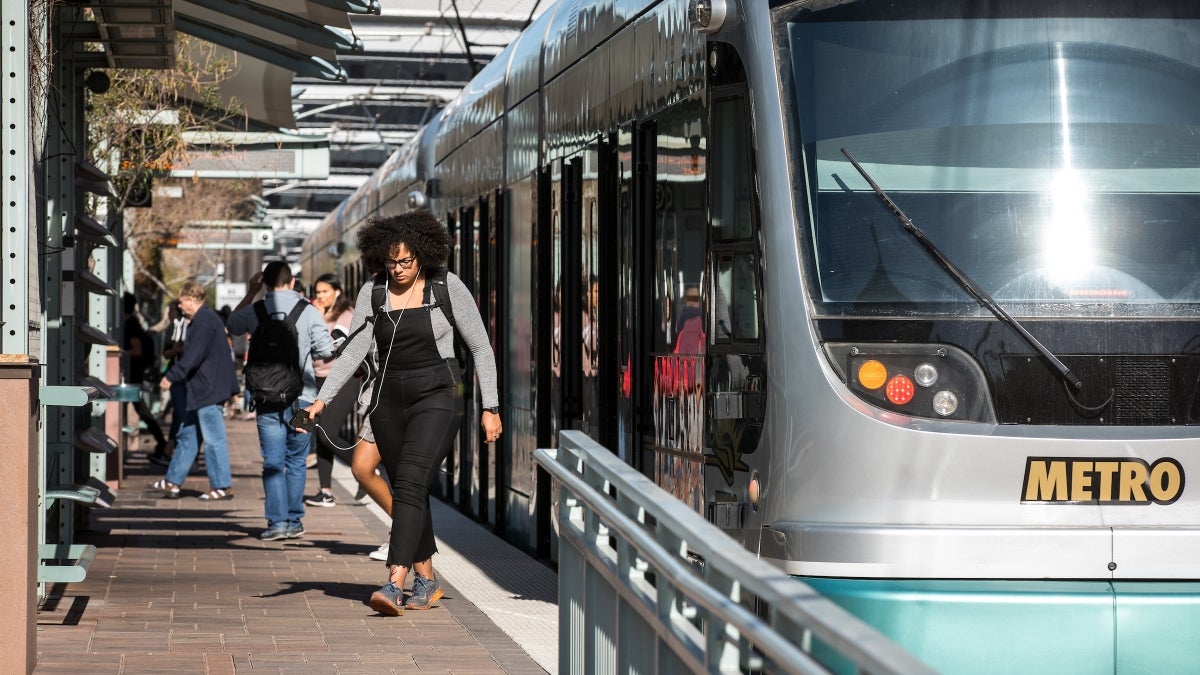Study: Life experiences as valuable as training when collecting some scientific data

An ASU study examined structural exclusions at a Tempe light rail station. Photo by Charlie Leight/ASU News
Citizen science engages people who don’t identify as researchers in science investigations. Engagement can include everything from helping figure out what questions to ask, to gathering data and contributing to analysis.
Cindi SturtzSreetharan, associate professor at Arizona State University’s School of Human Evolution and Social Change, recently conducted a study with fellow anthropologists that compared observations made by community volunteers and those made by trained research assistants.
In this project, authors formulated a research question around how well volunteers and trained research assistants could recognize "structural exclusions."
“Structural exclusions include instances where a person may feel excluded from a space or area based on something intrinsicExamples include: poor lighting, narrow or small space, hostile symbols. to the space or area” SturtzSreetharan said. “We were particularly interested in spaces that may signal exclusions based on gender, body size and minority status.”
Participants were recruited to walk around predetermined public spaces in Tempe, Arizona, to look for instances of structural exclusions. One space was the light rail station, where signs to reduce bad public behaviors (littering, talking too loudly on phones) appeared in both English and Spanish.
However, the signage that explains the historical significance of the area only appeared in English. SturtzSreetharan said this can feel exclusionary not only for the lack of content in languages other than English, but also because only the signs that underscore bad behavior appear in a language other than English.
The anthropologists had two hypotheses. The first was that the trained research assistants would be better observers of structural exclusions compared to untrained citizen volunteers, and the second was that observers who experienced discrimination based on gender, body size or minority status would be better at identifying structural exclusions.
“The literature tells us that people who have experienced discrimination in their lives are better at recognizing discrimination and the feellings of exclusion which may follow,” SturtzSreetharan said. “So our hypothesis was that people who self-identify as one of the characteristics under investigation may be better able to recognize structural exclusions in public spaces.”
Neither hypotheses were fully confirmed.
The trained research assistants and untrained citizen volunteers did not differ significantly overall. However, with regard to structural exclusions for body size and minority identities, trained research assistants did better than citizen volunteers. The study also showed citizen volunteers were better at identifying structural exclusions related to gender.
With regard to the second hypothesis, it was not confirmed: There was no significant difference in the exclusions identified based on the citizen volunteers' membership in all of the categories of interest (gender, body size and minority status).
“We learned two really important things in this study,” SturtzSreetharan said. “First, citizen science volunteers can collect data that is similar in quality to trained research assistants. Second, community volunteers remind us that attending to contextually important interpretation is key. We need to go beyond so-called ‘book knowledge.’”
The paper, “Citizen Social Scientists’ Observations on Complex Tasks Match Trained Research Assistants’, Suggesting Lived Experiences are Valuable in Data Collection,” is published in Citizen Science: Theory and Practice.
Other authors of the article include Director of Strategic Initiatives Alissa Ruth, President’s Professor Amber Wutich, Clinical Assistant Professor Meskerem Glegziabher, Graduate Teaching Associate Charlayne Mitchell, Research Professor H. Russell Bernard and President’s Professor Alexandra Brewis.
More Arts, humanities and education

ASU alum's humanities background led to fulfilling job with the governor's office
As a student, Arizona State University alumna Sambo Dul was a triple major in Spanish, political science and economics. After…

ASU English professor directs new Native play 'Antíkoni'
Over the last three years, Madeline Sayet toured the United States to tell her story in the autobiographical solo-…

ASU student finds connection to his family's history in dance archives
First-year graduate student Garrett Keeto was visiting the Cross-Cultural Dance Resources Collections at Arizona State University…